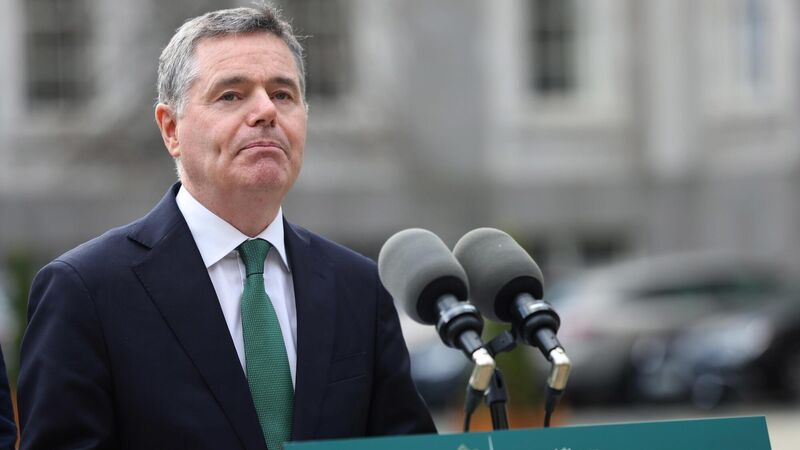Paul Hosford: Paschal Donohoe’s departure makes it harder to rebuild Fine Gael

Paschal Donohoe, the former minister for finance, at Government Buildings on Tuesday where he announced he was leaving his role in government to take up a position with the World Bank. Picture: Damien Eagers/PA
The departure of Paschal Donohoe from Irish politics leaves a number of questions for the Government, the coalition and Simon Harris, but it raises just as many questions for Fine Gael.
“Everybody has a plan, but when the context around that plan completely changes, you then assess what you’re going to do.
“And really it was my commitment to Simon [Harris], actually, and my faith in him, and my determination to make the case for a particular type of politics.”
In the end, out of loyalty to Tánaiste Simon Harris, Mr Donohoe said he decided to stick to his original plan and run last year.
“The party leader, an Tánaiste Simon Harris, is writing to each constituency noting that since he became leader, we have been in election mode almost continuously — fighting local, European, general, and presidential elections one after another.
“It has been an intense and demanding period, and he wants to sincerely thank everyone for their work in that time.
“Therefore, the Tánaiste will meet with each constituency over the next six months with the focus on hearing from members.
“It is proposed that the engagements would take one of three forms — a coffee morning, a public meeting, or a social gathering.”
“I want to democratise the party, engage with members, and organise and mobilise to connect with a wider public.
“We will listen to their interests, concerns, and views and secure their confidence and support.
“Gaining new support must be a key priority for the new leader of Fine Gael. I believe I am best placed to do that.
“Fine Gael should be a party that can attract votes in Castleknock and Clondalkin, Dungarvan and Doohoma, not because we try to be all things to all people but because there are people in all areas and all walks of life who share our values.”











